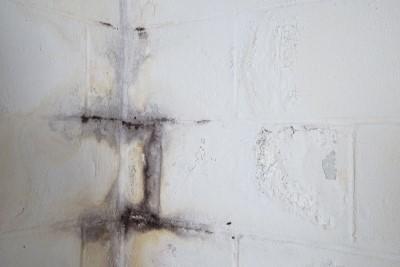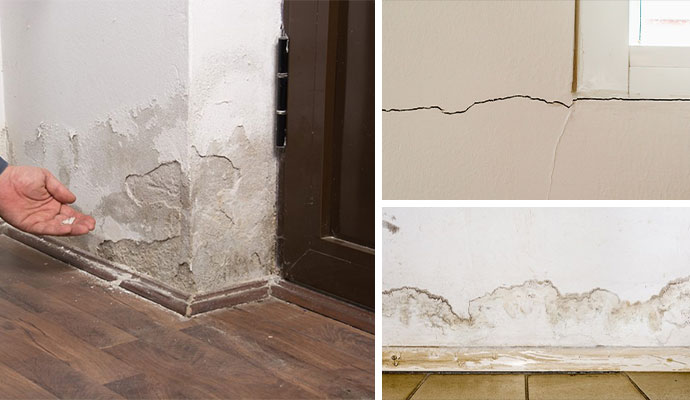How do you actually feel in relation to Indicators of Water Damage Behind Walls?

Water discolorations on walls are not positive to the eyes. Your house should lack spots on the walls, roofing, or floorings. That is the perfect state of a residence and also its frameworks. Often it appears virtually inescapable to experience water discolorations on walls in houses.
Property owners living in humid regions regularly manage the worry of water discolorations on walls. However that does not have to be the case for you. With exact and also well-rounded info on the root causes of water discolorations and also punctual fixing processes, you will always be a step ahead of such occurrences. So, this article promises to be an useful guide for you.
3 Usual Root Causes Of Water Discolorations on Walls
Unlike popular belief, water discolorations on wall surfaces do not constantly originate from inadequate building materials. There are numerous reasons for water stains on wall surfaces. These include:
Poor Drain
When making a building strategy, it is important to make certain sufficient water drainage. This will certainly stop water from seeping right into the wall surfaces. Where the drainage system is blocked or nonexistent, underground wetness accumulates. This links to extreme dampness that you see on the wall surfaces of your building.
So, the leading root cause of damp wall surfaces, in this situation, can be a bad drainage system. It can additionally result from bad management of sewer pipelines that run through the structure.
Wet
When warm moist air consults with completely dry chilly air, it triggers water droplets to base on the wall surfaces of structures. When there is heavy steam from cooking or showers, this happens in cooking areas and also bathrooms. The water droplets can discolor the surrounding walls in these parts of your house as well as spread to other areas.
Damp or condensation influences the roof and wall surfaces of structures. This triggers them to appear darker than other locations of the house. When the wall is wet, it creates an ideal atmosphere for the growth of microorganisms as well as fungi. These may have adverse effects on health, such as allergic reactions and also respiratory system problems.
Pipe Leaks
Most residences have a network of water pipes within the wall surfaces. This makes sure that the pipes are faraway from the reach of damaging rats. It always boosts the viability of such pipelines, as there is little oxygen within the wall surfaces. This dissuades corrosion.
Yet, a drawback to this is that water leakage influences the wall surfaces of the structure and also causes widespread damage. A telltale sign of faulty pipes is the appearance of a water tarnish on the wall surface.
Water Discolorations on Wall: Repair Tips
Property owners would typically want a quick fix when managing water spots. Yet, they would quickly realize this is disadvantageous as the water stains repeat. So, here are a few valuable ideas that will certainly assist you in the repair service of water spots on wall surfaces:
Pro Tip
A houseplant in your home additionally increases its moisture. If the home is currently damp, you might want to introduce houseplants with very little transpiration. An example of suitable houseplants is succulents.
Conclusion
No one wants to have water discolorations on wall surfaces in their house, it can happen to the ideal of us. This post provides you leverage, as you currently know just how to handle this mishap if it does take place.
It is always best to hire professional services to assist take care of the problems in your home.
Often it appears almost inescapable to experience water discolorations on wall surfaces in homes.
Contrary to popular belief, water discolorations on walls do not constantly stem from poor building materials. There are several reasons of water stains on walls. The water beads can discolor the bordering wall surfaces in these parts of your home and also spread to other areas.
Below are a couple of useful pointers that will certainly lead you in the repair of water stains on walls:
CHECKING FOR WATER DAMAGE
Water damage can be costly, and it may begin before you even notice the first signs of trouble. Water damage can cause mold and mildew in your walls and floors, which can create an abundance of health concerns for your family. It can also lead to costly repairs of various appliances and general home fixtures. To avoid the pricey consequences of water damage, here are Warner Service’s top 5 places you should check:
The walls – The easiest place to spot the beginnings of water damage is on the walls and ceilings of your home. If water damage is present, there will most likely be water stains, especially around the windows and doorframes, and/or cracks in the drywall. If a stain looks unusual (discolored to brown, black or gray, raised texture), has a swollen appearance or is soft to the touch, contact a professional immediately. The pipes – To avoid water damage, consistently check the pipes in your kitchen (especially the dishwasher and ice maker), bathrooms, laundry room (specifically washing machines) and basement for corrosion, leaks and water stains. Pay special attention to where the pipes connect in your home and the location of caulking around the bathroom fixtures, including toilets, sinks, showers and tubs. Missing or loose caulking and grout could be signs of leaking water. This seepage can also quickly cause mold and rust, so double check your water heater and tank for wet spots on the floor. The floor – Water damage is very easy to spot on the floor. Look for any warping or buckling of the material, especially in the basement. If your home has wood flooring, look for bright white or dark stains. If your home has carpeting, keep it dry and clean. A damp carpet that smells of mold could cause water damage and health problems. To avoid this, consider installing floor pans under your appliances to help prevent damages from small, slow and undetected leaks. The basement and attic – If your basement or attic smells odd check for mold and mildew around the area, especially the valley where the roof meets. While you are inspecting those areas, check for wall cracks, floor stains, rust and dampness in the insulation. If you live in a colder and/or rainier climate, perform routine checks for water damage from melting snow or ice and rain. The exterior – Check the roof for damaged flashing and missing, cracked or curled shingles. There should also be no standing water anywhere outside your home. This could be caused by puddles, leaky rain gutters or hoses, poor drainage, or short gutter spouts. Invest in a sump pump system or water flow monitoring system, and perform routine maintenance on these outdoor appliances to avoid indoor water damage.

Do you appreciate more info about Water Stains on Walls? Place feedback down below. We will be interested to find out your responses about this blog posting. We hope that you visit us again before long. Are you aware of another individual who is fascinated about the topic? Please feel free to promote it. Kudos for your time. Please check up our site back soon.
About This